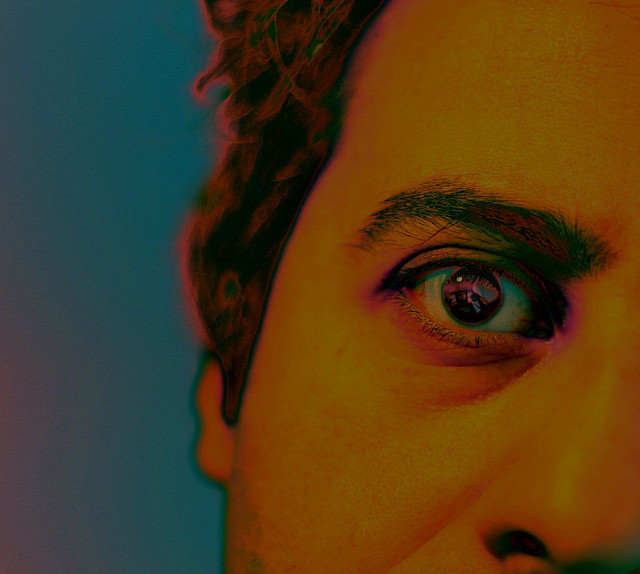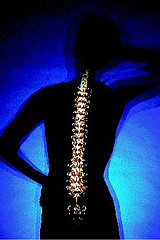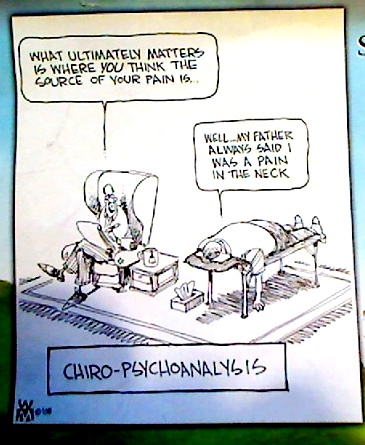 Anxiety is a problem which has afflicted us all at one time or another. Fortunately, our anxiety is usually the result of a specific context or situation, and it resolves as we move to meet the problem or it is otherwise solved. Not so for many, however, who have to deal with anxiety on a day-in, day-out basis. Many people experience panic attacks for no reason, where their heart starts pounding, they get short of breath, and they get a feeling of dread. Generalized anxiety, a free-floating sense of worry that is out of proportion to the cause, can last for weeks or months, and can result in insomnia, hyperactivity, headaches, irritability, abdominal distress and other symptoms.
Anxiety is a problem which has afflicted us all at one time or another. Fortunately, our anxiety is usually the result of a specific context or situation, and it resolves as we move to meet the problem or it is otherwise solved. Not so for many, however, who have to deal with anxiety on a day-in, day-out basis. Many people experience panic attacks for no reason, where their heart starts pounding, they get short of breath, and they get a feeling of dread. Generalized anxiety, a free-floating sense of worry that is out of proportion to the cause, can last for weeks or months, and can result in insomnia, hyperactivity, headaches, irritability, abdominal distress and other symptoms.
Mainstream medicine, of course, relies primarily on drugs to treat anxiety disorders, but these drugs can create more problems than they solve. Benzodiazepines, for example, interfere so much with mental functioning that anyone who is taking that class of drug is not permitted to have a commercial drivers license, and they are also highly addictive. A common anxiolytic, Xanax, is one of the most frequently-used drugs to treat this condition, despite the fact that there are no long-term studies confirming either it's effectiveness or it's safety. Overall, the use of anti-anxiety drugs increases your risk of death from a variety of causes, so with all of this in mind, drugs may not be the best answer for this particular problem.
Fortunately, there are several ways of managing anxiety that do not require drugs. EEG neurofeedback, a technique which uses real-time electrical signals in your brain to alter its patterns, has been used quite successfully to manage anxiety. Fortunately, Litchfield has an excellent clinical therapist who is also highly skilled in EEG neurofeedback. David Pavlick is a clinical social worker with an office at the Center for Alternative Medicine, and has helped many people overcome their anxiety.
Cognitive Behavioral Therapy, or CBT, is the current darling of psychology, and it, too, appears to be very effective in treating anxiety. In fact, a variety of talk therapy techniques have been shown to help people with anxiety.
But, as is the case for most chronic problems, a multidisciplinary approach usually results in better results. People with chronic problems, especially mental and emotional disturbances, should also be examined by a primary care chiropractor to eliminate underlying physical and nutritional causes for the anxiety.
Multiple studies have confirmed that balancing the essential fatty acids (EFAs) can reduce the symptoms of stress. Back when I started practicing, I used to hand a patient a bottle of EPA or DHA and have them take it for a month to see what kind of response we would get. These days, however, I can order a simple blood test, covered by insurance, which will show me the patients' levels of the various essential fatty acids, eliminating the guesswork. I can tell without trial and error whether or not such an approach is likely to work, and if so, exactly what kind of dosages of which EFAs I need to make my patients better.
The B vitamins, magnesium and calcium also play a role in anxiety states, and adjusting these levels may help as well. Imbalanced hormones will also often play a role, as an over- or underactive adrenal gland, or an imbalance in the hypothalamic-pituitary axis can be primary causes of anxiety symptoms.
Very often, I find, that in order to correct my patient's nutritional status, we have to begin by fixing impaired digestion, one of the most common -- and most overlooked -- causes of mental and emotional issues that I see.
With all of these conditions, once again, instead of guessing, I test, and use objective measures to tell me if these types of intervention will be useful.
Finally, Traditional Chinese Medicine can be successfully employed to help patients with anxiety. From a TCM point of view, there is no separation between mind and body, and the freedom from that false duality gives us the ability to view anxiety from an entirely different angle.
In TCM, anxiety stems primarily from an imbalance in the Spleen organ system. Because the Spleen, in TCM, is responsible for extracting qi from the food, Spleen imbalances result in qi stagnation or depression.
When qi becomes depressed in the middle jiao, then you start to experience the signs and symptoms of panic attacks, as well as other classical signs of anxiety. Thus, from a TCM point of view, restoring normal Spleen functioning is primary to the treatment of anxiety. (As a side note, I find it very interesting that in both TCM as well as Western alternative medicine, the digestive system is found at fault in mental disorders.)
So, fortunately, for people experiencing anxiety, there are a number of approaches that can be used to assist them. From nutrition to acupuncture to lifestyle and herbal interventions, a variety of forms of alternative medicine can be used as an adjunct to, or even primary means, of helping people deal with anxiety disorders.
Dr. Avery Jenkins is a chiropractic physician specializing in the treatment of people with chronic disorders. He can be reached at alj@docaltmed.com or by calling 860-567-5727.
 Many people think of chiropractic care as nothing more than a spinal adjustment. While that is the core of our therapeutic interventions, there are a number of other ways we restore patients to health.
Many people think of chiropractic care as nothing more than a spinal adjustment. While that is the core of our therapeutic interventions, there are a number of other ways we restore patients to health.
 Anxiety is a problem which has afflicted us all at one time or another. Fortunately, our anxiety is usually the result of a specific context or situation, and it resolves as we move to meet the problem or it is otherwise solved. Not so for many, however, who have to deal with anxiety on a day-in, day-out basis. Many people experience panic attacks for no reason, where their heart starts pounding, they get short of breath, and they get a feeling of dread. Generalized anxiety, a free-floating sense of worry that is out of proportion to the cause, can last for weeks or months, and can result in insomnia, hyperactivity, headaches, irritability, abdominal distress and other symptoms.
Anxiety is a problem which has afflicted us all at one time or another. Fortunately, our anxiety is usually the result of a specific context or situation, and it resolves as we move to meet the problem or it is otherwise solved. Not so for many, however, who have to deal with anxiety on a day-in, day-out basis. Many people experience panic attacks for no reason, where their heart starts pounding, they get short of breath, and they get a feeling of dread. Generalized anxiety, a free-floating sense of worry that is out of proportion to the cause, can last for weeks or months, and can result in insomnia, hyperactivity, headaches, irritability, abdominal distress and other symptoms.

 It appears that the medical community is about to foist yet another quack "cure" for osteoporosis on the women of this country. Prolia, the latest alleged treatment for osteoporosis, is an injectible that was approved by the FDA primarily on the basis of a single study paid for and conducted by the company that developed the drug.
Ok, let me repeat that one more time. The FDA has approved a dangerous (we'll get to that in a minute) drug on the basis of research that the developer bought. Not to put too fine a point on it, but government oversight of BP's woebegotten Deepsea Horizon was more stringent than this.
It appears that the medical community is about to foist yet another quack "cure" for osteoporosis on the women of this country. Prolia, the latest alleged treatment for osteoporosis, is an injectible that was approved by the FDA primarily on the basis of a single study paid for and conducted by the company that developed the drug.
Ok, let me repeat that one more time. The FDA has approved a dangerous (we'll get to that in a minute) drug on the basis of research that the developer bought. Not to put too fine a point on it, but government oversight of BP's woebegotten Deepsea Horizon was more stringent than this.

